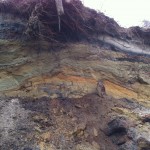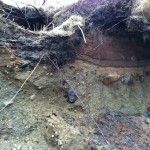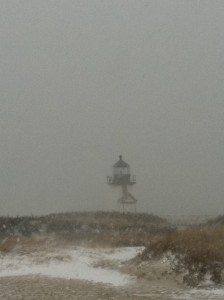As we pass the halfway point in this adventure, it is time to crack the whip and make some real headway on my independent study, Primary Productivity by Phytoplankton in Salt Marshes. The goal of this study will be to assess the levels of primary production, which is the process of converting inorganic molecules, like CO2 and H2O,into vital organic compounds through cellular respiration, and is the base of the estuarine ecosystems food web. An evaluation of any changes in abundance, species diversity and dominant species will allow for comparison to other variables to see any correlations and possibly point towards a cause for these changes. Variables for this study will water salinity, temperature, pH, dissolved oxygen (DO) and biological oxygen demand (BOD). In order to calculate productivity levels I will be extracting chlorophyll a, from the phytoplankton filtered out of the water. Chlorophyll a is a pigment used in the process of photosynthesis. Chlorophyll absorbs light of a certain wavelength, and can be measured using a machine called a flourometer. I will be taking weekly water samples from various site within three different salt marshes around the island. Samples will be taken back to the lab at the Field Station to be processed for readings with the flourometer. I had my first interaction with the flourometer this weekend. Ashley gave me great introduction to how it works and them we took a couple of practice samples from Folger’s Marsh at the Field Station. On saturday we went through the whole process of filtering the phytoplankton from the water and stored them in the fridge covered in tin foil, to slow photosynthesis and preserving the chlorophyll. The filters, containing the phytoplankton, were soaked on acetone to separate the chlorophyll. We also ran a chlorophyll standard curve, a process that involves doing a series of dilutions to a know concentration of chlorophyll, to get a formula that is then used to convert flourometer readings into chlorophyll concentrations. This afternoon we returned to the Field Station to run our samples through the flourometer. We were both very excited to see results, because it was not certain that we have enough chlorophyll to read. Also, it was a sign that we didn’t screw anything up. Some question did arise during this weekends experiences and I look forward to finding the answers and applying them to my research. The best part was that I finally realized that I would be able to report some good data by the end my experiments. I am hopeful that I will also see some changes in levels as the spring rolls in and conditions change. Soooo, that was a handful, I know but I had to get it there.
Author Archives: jessebean001
Nantucket Geology Lesson with Dr. H
- Sand Layering by Storm Wash
- Old Beach Berm
- Glacial Deposits Near Pocomo
- Profile of a Beach
A few weeks I was lucky enough to join Dr. Sarah Oktay, Amy Meloski and Llewin Froome to take measurements of a Common Dolphin that had died and washed up onshore near Pocomo Beach. Amy is a volunteer at the New England Aquarium and she gets calls for dead and stranded animals. Last week she recieved a call for another Common Dolphin near Siasconset(pronounced simply Sconset by the locals). Before checking out the new one we went back to Pocomo to see if the first one we saw was still there, in order to help determine if they could be the same animal that just floated with tides and currents. The one at Pocomo was no longer there but due to the location of the new one and the shape of the island we were pretty sure there was no way for them be the same. As we walked down the beach at Pocomo we realized the extent of Nemo’s wrath on Nantucket’s coasts. About ten feet of the bluff along most Polpis Harbor had just dropped off onto the beach, nearly twenty feet below.
The picture titled “Profile of a Beach” is a diagram of the different geological features that make up the beaches on Nantucket. It was drawn by Dr. Robyn Hannigan-(emphasis on the DR.-not artist 😉 HAHA)
The picture on the top left, “Sand Layering by Storm Wash”, is what is found beneath the UMass Boston Field Station. It shows thin layers of sand that were deposited by storms. The bluff near Pocomo also lost the same amount but revealed some more interesting geology.
The “Old Beach Berm” picture shows a profile of beach face that has been subsequently covered over through time. The fact that we can see this profile from this view, looking from the current beach, suggests that the beach from that time extended in opposite directions than it does today. The white layer near the top is called Caliche and consists only of sand that has completely leached everything that can possibly be leached out. The dark layer below that is an older B-horizon(basically just a fancy word for distinct layer in soil), and consists of oxygenated minerals, or iron-oxides. The middle of the picture is the profile of the berm itself, and would have a beach ridge and runnel extending in each direction.
The picture titled “Glacial Deposits Near Pocomo” shows what is know in geology as a conglomerate. A conglomerate is a type of sedimentary rock that consists of many different grain sizes, from sand to boulder, cemented together. This type of formation found here on Nantucket is evidence as to the islands formation, as it can only be deposited by a glacier. Around 12.000-19,000 years ago the Laurentide Ice Sheet stopped here, and began to retreat northward. As it receded, it left behind what is called a terminal moraine, forming Nantucket, Martha’s Vinyard to the west and Cape Cod to the north. The layers above the conglomerate show that sediments have been piling up on the moraine, along with accretion by wave and tidal action, shaping Nantucket into what it is today.
I want to thank Dr. Hannigan for coming out in the rain with Sarah Jacobs, Rubio Rodriguez and myself to explain this to us. You are a great teacher, advisor and friend. Can’t wait for you to make it back to the island. The bacon will be ready when you get here!!!
Snow, Snow Snow….and a little SUNSHINE!
When we first arrived on the island everyone was wondering what the weather was going to be like. The locals that we asked all said that it gets cold and windy, but it doesn’t snow all that often. Oh really!? We had a blizzard the first night capped off by an epic snowball fight in the middle of nowhere (we figured out we actually were when we left a a water tower on a field trip). It seems that since that night it has snowed fairly significantly at least twice a week. Now, I’m not saying its a bad thing, it definitely adds a different dynamic to the atmosphere over here. Snow is preferred over rain any day. The wind, however is something entirely different. When it blows, it howls, and it cuts to the bone. Today is the nicest day since we got here. Some of us went for a walk on the beach which was very relaxing, even though it was to go take some measurements from a dead dolphin. I think I will go back outside and enjoy it for a little while longer…..
Round two…DING!
I can’t believe we are already done with our first block of class, Eco-poetics. I have to say that I have a newfound repect for poetry in general. When I first heard that this was going to be one of our classes I was not happy about it. It only took one or two classes for me to figure out that it wasn’t what I though it was going to be, and I actually enjoyed writing some poems. I have to to extend my thanks to Len Germinara for exposing us all to the art of peotry, rather than shove it down our throats. His emphasis on the fact that poetry does not have to have any form and allowing us the freedom to write about anything we wanted made it impossible not to enjoy what we were doing. We were lucky to have the many guest speakers, from local author Nathanial Philbrick to Poetry Slam legend Regie Gibson. So, Thank You Lenny. We crammed a lot of fun, art, island history, public engagment and coming together as a group into these first three weeks. I couldn’t have imagined this adventure starting out any better and I am excited for whatever is to come. I also want to thank my fellow students for being who they are and making this experience what it has been and will be when its over, you guys rock! Lets continue to be tight and help each other when its needed. Oh yeah……and keep PLAYING LIKE CHAMPIONS!!





